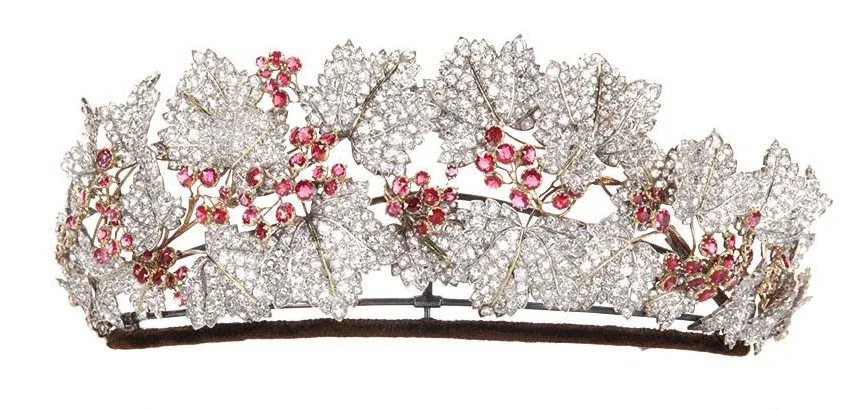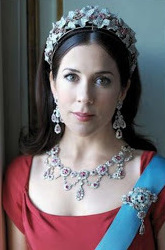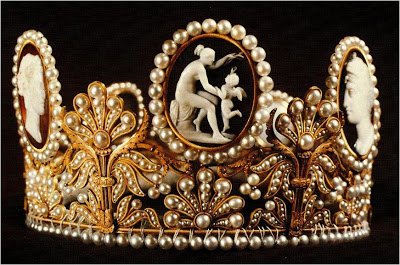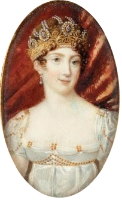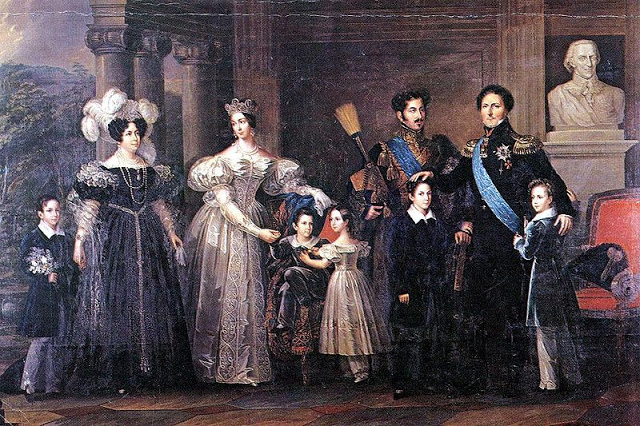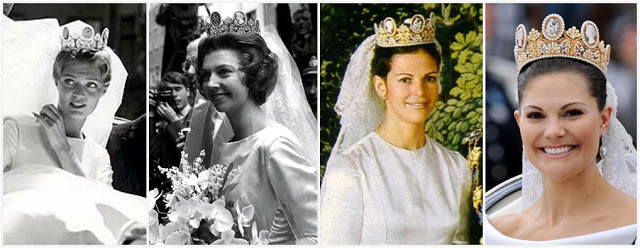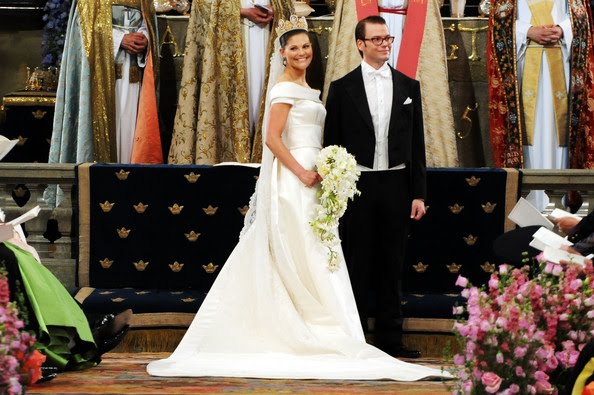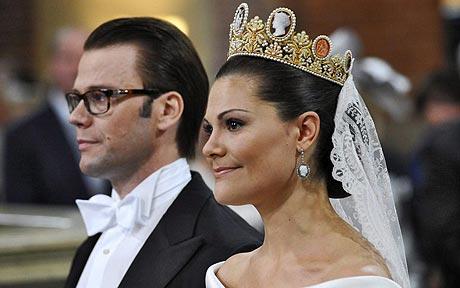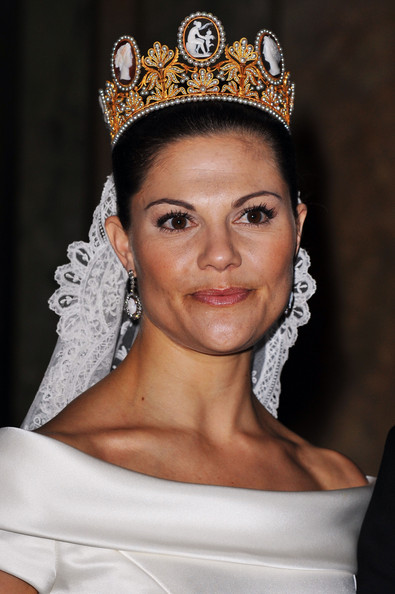The Danish Ruby Parure Tiara
/The Dainsh Ruby and Diamond Tiara
Princess Mary of Denmark looked stunning at the annual royal New Year’s Banquet held at Amalienborg Palace this year. She paired her gold dress with a diamond and ruby tiara and her Knight of the Order of the Elephant collar.
Princess Mary and Prince Frederik of Denmark at the annual royal New Year’s Banquet
The tiara began life in the court of Napoleon Bonaparte and looked very different from its current form. In honor of the grand coronation planned for the Emperor, Bonaparte had given money to many of his marshals so that jewels with the appropriate grandeur could be created/bought for their wives. Jean Baptiste Bernadotte was one of those marshals. He purchased the ruby and diamond wreath tiara and accompanying parure for his wife, Désirée Clary.
Jean Baptiste Bernadotte and his wife Désirée Clary later became King Carl XIV Johan and Queen Desideria of Sweden, and thus the jewels found a new Swedish home. The tiara came to Denmark with Swedish princess Louise who married the future Danish king (Fredrick VIII) in 1869. Louise had received the tiara as a wedding gift from her grandmother, Queen Josephine of Sweden (Désirée's daughter-in-law). Queen Louise later gave the tiara to her son Crown Prince Christian's bride Alexandrine as a wedding gift; Alexandrine would inherit the rest of the parure on Louise's death.
Princess Mary in the ruby Parure
Alexandrine then gave it to Princess Ingrid of Sweden when she married Crown Prince Frederik of Denmark in 1935. In the hands of Queen Ingrid the original small wreath was transformed. In 1947, Ingrid added two of the brooches that came with the original parure to the tiara. This gave the tiara a much more substantive look and turned the wreath into a proper tiara.
When Queen Ingrid died in 2000 she left the parure to her grandson, Crown Prince Frederik who would go on to marry Princess Mary. The ruby tiara is the first tiara Princess Mary ever wore during her pre-wedding events in 2004. Mary also wears it for the annual New Years Court gala (mentioned above).
The current parure consists of a necklace, hairpins, earrings, a brooch, a bracelet, and a ring (an addition care of Mary). Princess Mary does not have many grand pieces at her disposal, but with Mary's own inventiveness has and all that is available with the ruby parure Mary is able to make the ruby parure "stretch" so to speak. Mary has also followed in Ingrid's footsteps by altering the shape of the tiara to her own taste. It was not as major of a change as Ingrid's, though it is noticeable in a side by side comparison. Mary rearranged the diamond covered leaves creating a more condensed look which sits more upright. The work on the tiara and the rest of the set was done by the Marianne Dulong jewelry firm. They also created a new ring and hairpins from pieces that were left over. The new tiara debuted in 2010.
Princess Mary in the ruby Parure after it's alteration
